By Lisa Pinkerton, S. Adam Crawley, and Sara K. Sterner
Starting in 1994, the Children's Literature Assembly (CLA) has sponsored a Master Class at the annual NCTE Convention. This session provides K-12 teachers and teacher educators, as well as other members of the organization, the opportunity to gain insight into effective pedagogies for fostering a love of literature across diverse classroom and academic contexts.
The 29th annual Master Class is titled "Books as Lighthouses: Using Children’s Literature to Illuminate and Provide Hope in the Darkness of Sexual Abuse." This year’s session will take place on Saturday, November 19th from 6:00-7:15 p.m. (Pacific) in Anaheim, CA. The 2022 Master Class is organized around a moderated panel, followed by a discussant led Q&A with the following esteemed authors, illustrator, translator, and editor of children’s literature:
2022 CLA Master Class Contributors
PANELISTS
Paula Chase-Hyman is the author of nine middle grade and young adult books. So Done, her critically acclaimed middle grade debut, was named a 2018 Kirkus Reviews Best Book and was followed by two more books in the series: Dough Boys and Turning Point. She is also the author of the young adult series, Del Rio Bay Clique. Co-founder of the award-winning blog, The Brown Bookshelf, Paula is a longtime “advocate for diversifying the type of fiction featuring Black characters that’s highlighted among educators, librarians and parents” (author website).
Kate Messner is a New York Times bestselling author who is “passionately curious and writes books for kids who wonder, too” (author website). She has written numerous award-winning picture books and novels, including The Brilliant Deep: Rebuilding the World’s Coral Reefs (illustrated by Matthew Forsythe), named a CLA 2019 Notable Children’s Book in the Language Arts. She is also the author of numerous fiction and nonfiction series including Ranger in Time and History Smashers. Kate’s middle grade novel, Chirp, was a 2020 New England Book Award finalist. In her blog Countdown to CHIRP, Kate shares all about the writing process behind her novel, Chirp, including actual charts that played an integral role in her revision process.
Mary Kate Castellani is Publishing Director at Bloomsbury Children’s Books and the editor of Chirp (Messner, 2020). In a recent interview about the book and depictions of #MeToo trauma in middle grade literature, Mary Kate emphasized the dedication that she and Kate Messner share in: “addressing these relevant topics in a way that is appropriate for each age level, meeting kids where they are, and ideally preparing them for how to cope with such events” (Maughan, 2020, para. 22). Further, she spoke to the relevance of such books: “Many adults don’t like to think that kids are aware of such challenging subjects, but they are, and we need to equip them with the right knowledge to protect themselves and each other” (para. 22).
MODERATOR AND DISCUSSANT
The 2022 Master Class
The 29th annual CLA Master Class seeks to examine a particular shift in the landscape of children's literature, one that reflects the zeitgeist of the #MeToo movement, which has prompted an increase in the number of middle grade books that address issues of sexual violence (de León, 2020; Maughan, 2020; Robillard et al., 2021). The session will explore how books can nurture healing and hope in readers who have experienced such trauma, as well as provide information and support to protect readers. A panel of book creators (e.g., authors, illustrator, translator, editor) will share how their honest and sensitive stories illuminate the topic of sexual violence.
The following overriding questions will guide the session: How might books with dark subject matter foster hope in readers? And, how might teachers and teacher educators facilitate reader engagement with these vital books? We hope that attendees will leave the session with a more nuanced understanding of the shifting landscape of children's literature relative to the #MeToo movement, along with a deeper level of comfort using these books in classrooms, especially in light of the turbulent times that teachers and teacher educators inhabit relative to censorship.
References
de León, C. (2020, June 17). Why more children's books are tackling sexual harassment and abuse. The New York Times. Retrieved from https://www.nytimes.com/2020/06/17/books/childrens-books-middle-grade-metoo-sexual-abuse.html Maughan, S. (2020, April 13). Eye on middle grade: Editors discuss some of the latest developments in the category. Publishers Weekly, 23-21. Retrieved from https://www.publishersweekly.com/pw/by-topic/childrens/childrens-book-news/article/83006-eye-on-middle-grade-spring-2020.html Robillard, C. M., Choate, L., Bach, J., & Cantey, C. (2021). Crossing the line: Representations of sexual violence in middle-grade novels. The ALAN Review, 49(1), 33-47. Resources Paula Chase-Hyman’s Interview with Reading Middle Grade Blog. Kate Messner’s Interview with BookPage Valérie Fontaine’s Interview with Foreword Reviews Nathalie Dion’s Feature in Canadian Children’s Book News Shelley Tanaka’s Interview with Cynthia Leitich Smith at Cynsations
Lisa Pinkerton (she/her) is the Marie Clay Endowed Chair in Reading Recovery and Early Literacy at The Ohio State University. Her current roles with CLA include serving as a Board Member and Master Class Co-Chair. In addition, she served on NCTE’s Award for Excellence in Poetry for Children committee from 2016-2019.
S. Adam Crawley (he/him) is an Assistant Teaching Professor at the University of Colorado, Boulder. His current roles with CLA include serving as a Board Member and Master Class Co-Chair. In addition, he is the treasurer of NCTE’s Genders and Sexualities Equalities Alliance (GSEA). Sara K. Sterner (she/her) is an Assistant Professor at Cal Poly Humboldt and the Leader of the Liberal Studies Elementary Education Program in the School of Education. Her current roles with CLA include serving as a Board Member and Master Class Co-Chair. By Mark I. West
Cassie loves being with her family and neighbors on the “tiny rooftop” that she calls her “Tar Beach.” Her parents put a mattress on the roof for Cassie to sleep on while the adults are visiting. For Cassie, “Sleeping on Tar Beach was magical. Lying on the roof in the night, with stars and skyscraper buildings all around me, made me feel rich, like I owned all that I could see.” Cassie fantasizes that she can fly. The illustrations depict her soaring above New York City. Ringgold portrays the rooftop as a liminal space where reality and fantasy merge. In her fantasy flights, Cassie helps her father overcome the racial discrimination that he faces. Within the context of her fantasies, she feels good about herself because she can make life better for her family. Her fantasies correspond to a point that Bruno Bettelheim makes in The Uses of Enchantment about the healing power of fantasy. “While the fantasy is unreal,” Bettelheim writes,” the good feelings it gives us about ourselves and our future are real, and these real good feelings are what we need to sustain us.”
planet known as Junior Brown.” Junior Brown likes the idea of having a planet named after him, and he enjoys creating stories about his planet. For Junior Brown, this experience helps him gain a better sense of self-worth. For Buddy, this room provides him with the sense of security that helps him move beyond being one of the “tough, black children of city streets.” In the process, he begins to imagine a new future for himself. Like Hamilton, David Barclay Moore spent time in Harlem, and he drew on this experience when writing The Stars Beneath Our Feet. Lolly, the central character, is a twelve-year-old boy who lives in contemporary Harlem. His life is upended when his older brother is killed in a gang-related incident. Lolly also faces changes in his family situation. Before the novel’s opening, his parents separated, and his mother’s girlfriend moved into the apartment. Lolly reacts to these events by withdrawing. His depression causes him to lose interest in everything except building with his Legos blocks, an activity he used to do with his brother.
The protagonists in these books all spend time in liminal spaces where the boundaries between reality and fantasy blur. For my students, these books brought back childhood memories of special places where they, too, felt that reality and fantasy merged. For one, it was a treehouse that she and her brother built, taking their inspiration from the Magic Tree House series. For another, it was a walk-in closet where she set up her dollhouse. When I started the class, I had no idea that these books would spark such lively discussions, but I now realize that these books tap into an aspect of childhood that resonates with students from various backgrounds. They might not be familiar with the term “liminal space,” but they all can relate to the quasi-magical experience of being in a liminal space. Mark I. West is a Professor of English at the University of North Carolina at Charlotte and a member of CLA. By Liz Thackeray Nelson & Lauren Aimonette LiangRight around this time last year, the blog featured two posts from CLA officer Dr. Wendy Stephens who deftly described the exciting annual YMA awards for children and adolescents. Wendy’s posts offer a rich introduction to understanding the focus of each of these prestigious awards, as well as a few other children’s book awards from other organizations, and some of the general selection criteria. In our undergraduate children’s literature course we introduce these important awards to begin discussions around evaluation of children’s books. We consider how the criteria might point to ways of evaluating excellence in children’s and young adult literature, and consider the connection of this evaluation to selection of books for use in classrooms, libraries, and other settings. We also use these award discussions as a way to heighten awareness of the business and marketing side to children’s literature, particularly considering how awards can influence sales, authors’ and illustrators’ careers, publishing trends, and ultimately access to books. Below we briefly describe a reading-reflection sequence and activity that we have found helpful in building undergraduate students’ understanding of the impact of an award. Reading-Reflection Sequence 1: Read about older children’s book award debates. We have found that our undergraduate students, in general, have had very little exposure to children’s book awards prior to this class. Many recognize either the Newbery or Caldecott as being a book award for children, but few are aware there are other awards beyond this. Thus our first step is to introduce students to the idea that there exists many more awards beyond those two. To begin priming students’ thinking about the full range of awards, and their impact, we start by having them read Marc Aronson’s (2001) article, “Slippery Slopes and Proliferating Prizes,” published in The Horn Book Magazine. In addition to reading Aronson’s article, students read the letters to the editor published in the next Horn Book issue that respond to Aronson’s piece as well as Andrea Davis Pinkney’s response article, “Awards that Stand on Solid Ground.” After students read, we pose Aronson’s position to students: There are too many awards. Students then compose a brief response as to whether or not they agree with the statement and their reasoning. At this point in the discussion, students are often about 50/50 in where they fall on the issue. Reading-Reflection Sequence 2: Read about the lack of diversity in awards. To extend Andrea Davis Pinkney’s response article, we then ask students to read two additional articles that begin to address the lack of diversity in books that win the Newbery and Caldecott Medals: Roger Sutton’s (2016) “Last Stop, First Steps” and Megan Dowd Lambert’s (2015) “#WeGotDiverseAwardBooks: Reflections on Awards and Allies.” We deliberately use these short editorial pieces, both written near the beginning of the #WeNeedDiverseBooks (2014) movement, as they continue students’ understanding of not only these awards, but also focus on the historical lack of diversity in United States’ children’s literature and more recent focus on this problem. Dowd Lambert’s piece mentions the hashtag specifically, which encourages students to visit the WNDB page, where they can learn more. Sutton’s editorial reinforces this with reference to a 1996 discussion, and presentation of numbers of nonwhite authors. It also brings up issues related to book genre and format After reading these two short pieces, students are again asked to consider the statement: There are too many awards, and then compose a brief response as to whether or not they agree with the statement at this point, and their new reasoning for why they continue in their same opinion, or have now changed their answer. At this point in the activity, with students now having learned a little about the lack of diversity in award winners, we often find that those students who initially thought there were too many awards begin to shift their opinions. And those who disagreed with Aronson from the beginning often feel more justified in their stance that there are not too many awards. Reading-Reflection Sequence 3: Read about the impact of awards on authors. Next, we continue to further students’ understanding by having them learn about the author’s experiences in receiving an award. We seek out the newest reactions; for example, this year, we shared short articles from Publisher’s Weekly about Donna Barba Higuar, Jason Chin, and Andrea Bouley’s experiences when they found out they had won their respective awards. In connection with these readings, we typically ask students to read the short piece “Recognizing Rising Stars” (Aimonette Liang, Reading Today, 2015) that discusses the history and impact of the ILA Children’s and Young Adult Book awards that are designed to honor new authors with extraordinary promise. Quotes from multiple winners highlight the way an award can change the trajectory of an author’s career. After students consider these additional perspectives, we again ask them to consider the statement: There are too many awards. Once again, they present their opinion and reasoning. We then ask students to explain how their ideas around awards have changed over the course of the set of readings. Final Activity: Tracking Amazon rankings of award books. For our final activity to develop students’ understanding of the impact of children’s and young adult book awards, we have students track Amazon book rankings of winning books in the days after the YMA awards have been announced (see our class-compiled results for 2022 below). Students are assigned to an award and asked to find the winning book and honor books on Amazon as soon after the award announcements as possible. They record the sales rank. Students then check 24 hours later on the books’ sales ranks on Amazon. Students are typically shocked at how within hours of the award announcements books are sold out and have substantially higher rankings than they did before; for example, “When I looked earlier today [it] was #2277 and when I looked just now [it] is now #1 in children’s graphic novels. I can’t believe it was that low on the list earlier today and is now sitting at #1!” This experience helps students understand the impact of awards on the sales of books, and they begin to recognize further how this can affect the sales of future books by the author, and even the publisher in general. (We often add an additional quick check on changes in the sales of the author’s and illustrator’s previous books, or on the sales of that particular genre or format, etc.) Combined with the earlier reflections on readings, the students often begin to bring up concerns about how the award book might affect future children’s book sales, and thus access to both that particular book and others like it. In their final reflections on awards written after this last activity, nearly all, if not 100%, of the students in the class believe that there is value in having a wide array of awards that can honor diverse authors, illustrators, and books. Some students even go as far to state that there aren’t enough awards!
References: Aronson, M. (2001). Slippery slopes and proliferating prizes. The Horn Book Magazine, 77(3), 271-278. Garza de Cortes, O., Bern, A., Watson, J.S., Bishop, R.S., Edwards, C., Blubaugh, P., Caldwell, N., Holton, L., Hamilton, V., Taylor, D., Smith, H., Danielson-Francios, S., Rudd, D., Pinsent, P., Bush, M., & Hurwitz, J., (2001). Letters to the editor. The Horn Book Magazine, 77(5), 500-508. Lambert, M.D. (2015). #WeGotDiverseeAwardBooks: Reflections on awards and allies. The Horn Book Magazine, 91(4), 101-104. Liang, L.A. (2015). Recognizing rising stars. Reading Today, 32(6), 34-35. Lodge, S. (2022, Jan. 25). Donna Barba Higuera’s Newbery win: A dual celebration. Publishers Weekly. Maughan, S. (2022, Jan. 25). Angeline Boulley’s Printz win: Tears, champagne, and…lawyers? Publishers Weekly. op de Beck, N. (2022, Jan. 25). Jason Chin’s Caldecott win: ‘Kind of a surreal experience.’ Publishers Weekly. Pinkney, A.D. (2001). Awards that stand on solid ground. The Horn Book Magazine, 77(5), 535-539. Sutton, R. (2016). Last stop, first steps. The Horn Book Magazine, 92(4), 11-12. Liz Thackeray Nelson is a doctoral candidate in Reading and Literacy at the University of Utah. She is chair of the CLA Membership Committee and co-editor of the CLA Blog. Lauren Aimonette Liang is Associate Professor at the Department of Educational Psychology of the University of Utah. She is Past President of CLA and co-editor of the CLA Blog. By Kathryn Caprino and Erin KnauerTeaching and learning during COVID-19 has changed the way many of us and our students have encountered books. No matter the format, we have been committed to engaging our students with meaningful literacy experiences. Some of us created virtual libraries for our students during remote learning, and others referred students to author websites with read-alouds. In this blog post, we, a literacy teacher educator and a future early childhood teacher, share one way to build on the ever-present technology tools constantly within our students’ grasp: the virtual book tour. What is a virtual book tour? A virtual book tour is a digital tool that guides a reader through a text via a series of pre-, during-, and post-reading pathways. Why use virtual book tours? Purposefully, a virtual book tour explores a book’s storyline in depth, offers questions throughout, and encourages students’ reading of similar books. Designed with an essential question in mind, virtual book tours allow students to think critically about big picture questions. These book tours can be used with a whole class, during book clubs, and/or during centers. What does a virtual book tour look like? Whereas there is no one way a virtual book tour can look, here are some sample screen shots of parts of a teacher’s virtual book tour for When Stars are Scattered by Victoria Jameison and Omar Mohamed so that you can get some ideas. How do I create a virtual book tour?
Here are some steps to follow when creating your virtual book tour.
You’re On Your Way Now that you have some ideas about digital book tours, we wish you the best as you create your own! We would love to see the digital book tours you create! The authors would like to give credit to Laura Carr, who shared her virtual book tour with us. Kathryn Caprino is a CLA member and is an Assistant Professor of PK-12 New Literacies at Elizabethtown College. She blogs frequently at Katie Reviews Books and can be followed on Twitter @KCapLiteracy. Erin Knauer is a junior Early Childhood Education Major and Music Minor at Elizabethtown College. She excitedly looks forward to having her own classroom and continuing to keep up with the latest educational research. FOR CLA MEMBERS
CLA Board of Directors Elections
By Donna Sabis-Burns, Rachel Skrlac Lo, and Casey O'Donnell on behalf of the CLA Breakfast Committee
Looking out the window we begin to see the slight change in color of the fall foliage, a brisker feel to the air, and school busses carrying students to their not-so-new-normal classrooms. Apples, pumpkins, and “Indian” corn are appearing in the grocery store aisles. The gift of autumn is here. One highlight of this time of year is the NCTE Annual Conference held in November. Under “normal” circumstances, the Children’s Literature Assembly Breakfast is held in person as part of that gathering. While we will not be able to meet in person this year, the CLA Breakfast will be offered as a live event during the conference. In anticipation of our session, we are sharing about some of the most prolific, wonderful Indigenous multiple award-winning storytellers from across the Four Directions.
Cynthia Leitich-Smith (Muscogee Creek), Traci Sorell (Cherokee Nation), Michaela Goade (Tlingit), Carole Lindstrom (Metis), and Kevin Maillard (Seminole Nation) will make up this year’s Breakfast speaker panel. They will offer insight into their creative writing process, share their newest work, and offer some candid thoughts on how being Indigenous has strengthened their entire literature experience. These storytellers celebrate #OwnVoices in the here and now. They offer counter stories to highlight the dynamism of Native American and Alaska Native communities for all ages. During a conversation with them in February 2021, we discussed the joys of reading and storytelling and reflected on the importance of celebrating the rich legacy of Native experiences that influence contemporary society. Native American, American Indian, or Indigenous peoples (terms used interchangeably) make up the 575+ federally recognized tribes and 200+ state-recognized tribes, much diversity exists across this Indigenous landscape in the United States. To celebrate this diversity, in this post, we will share with you the newest works from these amazing storytellers, including samples of teacher guides, links to audio-books, artwork, and other storytelling materials to share both in and outside of the classroom. Teachers strive to create an environment for children that is all-embracing because they know that when children feel accepted, they will be happy, healthy, and confident members of society. This spirit of inclusiveness should permeate not only the social dynamic of the classroom, but the teaching materials as well. Children’s books that are endowed with social justice themes and multicultural issues provide a much richer reading experience than texts with homogeneous characters and unchallenging stories. The stories shared by these authors and illustrator offer many ways to enlighten students of all ages to the diverse books, cultural nuances, and traditions that Indigenous people bring to the table. Check out these teacher resources for a glimpse into the rich world of native storytelling. Activity Kits and Teacher Guides
When students encounter texts that feature characters with whom they can connect, they can see how others are like them and how literature can play a role in their lives. If students can feel connected to books, not only will they be more apt to obtain the intrinsic motivation to increase the amount of reading they do, but they will also begin to feel more accepted as strong and unique members of society and to become less vulnerable to negative stereotyping and feelings of oppression. It is the hope of our storytellers that these resources be shared with all students, to demonstrate not only resiliency and determination, but also joy and grace within the texts and illustrations to take them to places they have never seen or heard of before. Below are are some video and audio resources related to some of the works of our storytellers.
Video & Audio Resources
We are obligated to educate our youth with a clear lens and to teach the richness of realistic, authentic, and contemporary literature for children and young adults. We need to promote books where Indigenous characters are up front and visible, not hidden or pushed aside. We want to highlight in a bold, distinguishable manner characters and stories that unveil and promote the beauty of diverse literature written/illustrated by and for Native Nations (also called Indigenous people and used interchangeably here when the specific Nation is not known), and all other marginalized groups. The storytellers highlighted here, and across the land, provide a glimpse of the wonderment and beauty that present-day and historical Indigenous culture and traditions bring to the literature landscape.
Come celebrate with us at 9 am (EST) on November 21, 2021 at the CLA Breakfast at NCTE! There will be great conversation and book giveaways!
Donna Sabis-Burns, Ph.D., an enrolled citizen of the Upper Mohawk-Turtle Clan, is a Group Leader in the Office of Indian Education at the U.S. Department of Education* in Washington, D.C. She is a Board Member (2020-2022) with the Children's Literature Assembly, Co-Chair of the Diversity, Equity, and Inclusivity Committee, and Co-Chair of the 2021 CLA Breakfast meeting (NCTE).
Rachel Skrlac Lo is an Assistant Professor at Villanova University. She is a Board Member (2020-2022) with the Children's Literature Assembly, Co-Chair of the Diversity, Equity, and Inclusivity Committee, and Co-Chair of the 2021 CLA Breakfast meeting (NCTE). Casey O'Donnell is a graduate student in the Masters Plus Teacher Certification Program at Villanova University.
*The views expressed herein do not necessarily represent the positions or policies of the U.S. Department of Education. No official endorsement by the U.S. Department of Education of any product, commodity, service, or enterprise mentioned herein is intended or should be inferred.
By Jared S. CrossleyAlthough the fight for increased diversity in children’s literature has been going on for decades, there has been a recent surge in attention to this need since 2014 and the creation of the We Need Diverse Books (WNDB) campaign. The website for WNDB states that they advocate for “essential changes in the publishing industry to produce and promote literature that reflects and honors the lives of all young people” (We Need Diverse Books, n.d.), and their definition of diversity extends beyond diversity in sexual orientation, gender, and race, but also includes disability. According to the U.S. Department of Education (2019) there were 7 Million students in 2017-2018 who received special education services, accounting for 14 percent of all public school students. The amount of time these students spend inside a general education classroom has been gradually increasing over the last twenty years. This contributes to the growing need for educators to use texts with positive and accurate disability portrayals as part of their reading instruction in the general education classroom (Collins, Wagner & Meadows, 2018). Children with disabilities need to be able to see themselves in the books they read, and their classmates can also benefit, gaining empathy and understanding, by reading about children with similar disabilities. Dr. Rudine Sims Bishop (1990) wrote about how books can serve as windows, “offering views of worlds that may be real or imagined, familiar or strange” (p. 1). They can also serve as mirrors, which reflect our own experiences, and “in that reflection we can see our own lives and experiences as part of the larger human experience” (p. 1). It is very important that all children see themselves reflected in the books they read. However, many children who have disabilities or are racial minorities often don’t see themselves in the books that are available to them. Bishop stated: "When children cannot find themselves reflected in the books they read, or when the images are distorted, negative, or laughable, they learn a powerful lesson about how they are devalued in the society of which they are a part. Our classrooms need to be places where all the children from all the cultures that make up the salad bowl of American society can find their mirrors" -Rudine Sims Bishop Educators should make it a priority to provide all of the children in their classrooms books that serve as mirrors, as well as books that are windows into cultures that are not familiar to their students’ lived experiences. For the past four years, I have been privileged to serve on USBBY’s Outstanding Books for Young People with Disabilities committee. During that time I have gained new perspectives and learned more information about various disabilities and differences. One type of book that often gets grouped into the disability category is books that contain a portrayal of deafness. It has been debated if deafness should be considered a disability (Harvey, 2008; Lane, 2002) with varying opinions for and against the consideration of deafness as a disability. However, regardless of whether or not it is a disability, we need positive portrayals of deafness in children’s literature that can serve as mirrors for children who are deaf, and windows for children who are hearing. Over the past few years there have been a number of excellent middle-grade books that center a child who is deaf. In this post, I want to highlight three titles that I thought were exceptional portrayals.
Show Me a Sign
Show Me a Sign by Ann Clare LeZotte (2020) tells the story of Mary, a young girl growing up deaf in the early 1800’s on the island of Martha’s Vineyard. As part of a Deaf colony on the island, Mary has always felt safe and protected. However, all of this is threatened by the appearance of a young scientist who is bound and determined to find the cause of the island’s deafness so he can cure this “infirmity”. Soon Mary finds herself in harm's way as this scientist takes her as a “live specimen” in order to more closely study her deafness. The sequel, Set Me Free, is set to be released September 21, 2021.
References Bishop, R.S. (1990). Windows, mirrors, and sliding glass doors. Perspectives, 6, ix-xi. Collins, K. M., Wagner, M. O., & Meadows, J. (2018). Every story matters: Disability studies in the literacy classroom. Language Arts, 96(2), 13. Harvey, E. R. (2008). Deafness: A disability or a difference. Health L. & Pol'y, 2, 42. Lane, H. (2002). Do deaf people have a disability?. Sign language studies, 2(4), 356-379. U.S. Department of Education. (2019). Children and youth with disabilities. Retrieved from https://nces.ed.gov/programs/coe/indicator_cgg.asp We Need Diverse Books. (n.d.). About Us. WNDB. Children’s Books Frost, H. (2020). All He Knew. New York, NY: Farrar Straus and Giroux. Kelly, L. (2019). Song for a Whale. New York, NY: Delacorte Press. LeZotte, A.C. (2020). Show Me a Sign. New York, NY: Scholastic Press. Jared S. Crossley is a Ph.D. student at The Ohio State University studying Literature for Children and Young Adults. He is a former 4th- and 5th-grade teacher, and currently teaches children's literature courses at Ohio State. He is the 2020-2021 chair of the Outstanding Books for Young People with Disabilities committee (USBBY). |
Authors:
|
CLA
About CLA
|
Journal of Children's Literature
Write for JCL
|
ResourcesCLA-sponsored NCTE Position Statements
|
Members-Only Content
CLA Video Library
|
© COPYRIGHT 2018.
ALL RIGHTS RESERVED |







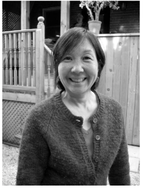





















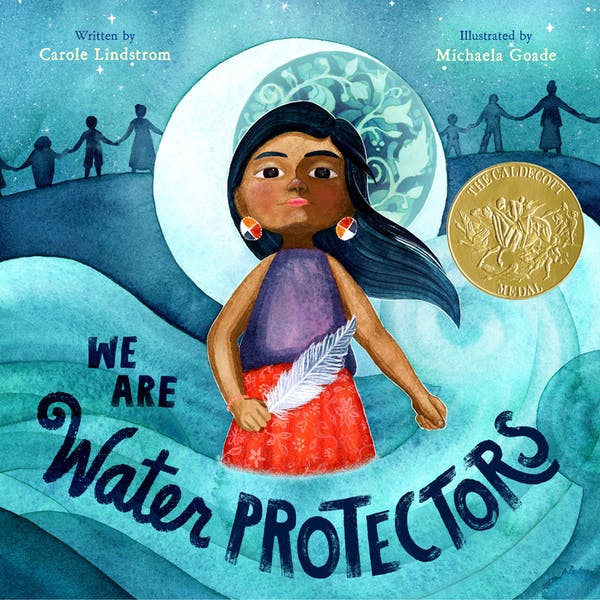
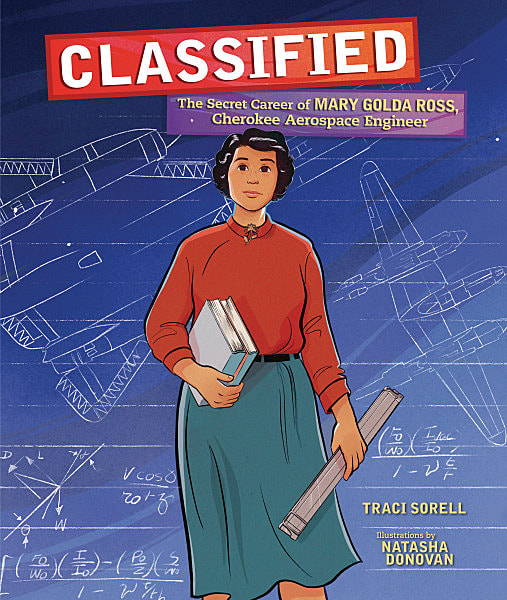

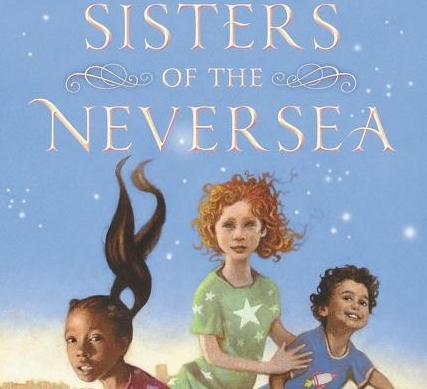



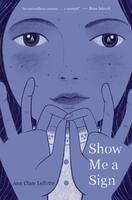


 RSS Feed
RSS Feed